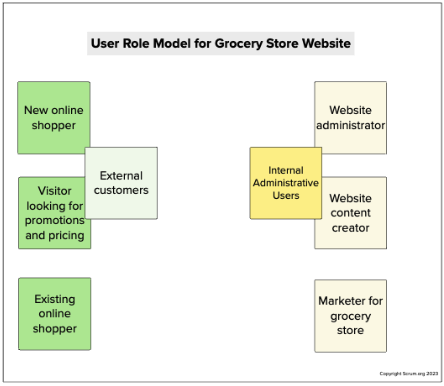User Role Modeling
User role modeling is a lightweight way to categorize what roles users take when interacting with your product. Knowing these roles and how they impact how the user interacts with the product gives the Scrum Team more context when creating and refining their Product Backlog items, especially if they are formatted as user stories.
Try facilitating a collaborative user role modeling session with the Scrum Team and relevant stakeholders in order to:
- Understand what roles users take on when using your product
- Brainstorm an initial list of user roles
- Organize user roles
- Refine user roles

Resources:
What did you think about this content?
Included In
Learning Series
By understanding its customers and users, a Scrum Team can identify opportunities, be more innovative and create products that people need and use. Here are different techniques ways to do this.